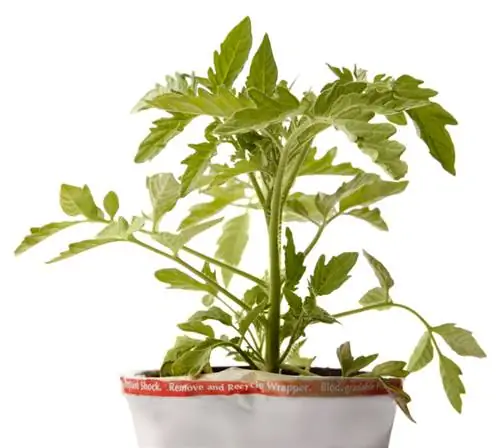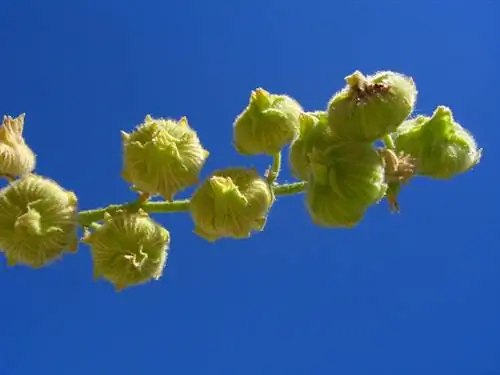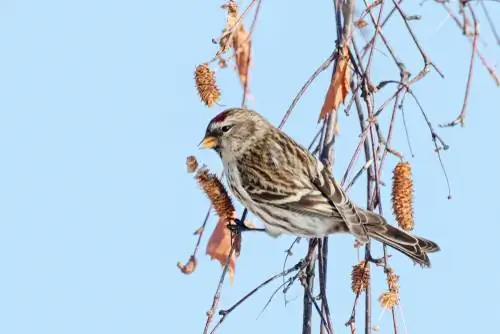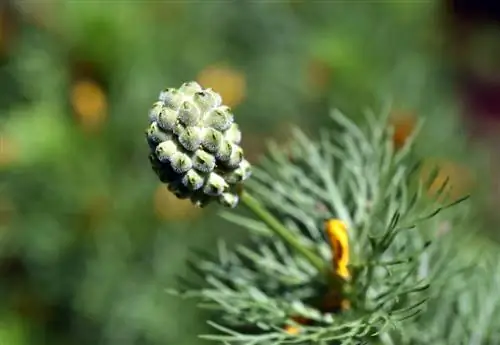- Author admin [email protected].
- Public 2023-12-16 16:46.
- Last modified 2025-01-23 11:20.
The black-eyed Susan (Thunbergia alata) is a beautiful climbing plant that can grow up to two meters high. In this country, the perennial plant is usually kept as an annual and is sown again in the spring. What you need to know about growing Black-Eyed Susans from seeds.

How do I grow Black-Eyed Susan from seeds?
To grow Black-Eyed Susan from seed, collect mature seed pods from the plant or purchase seeds commercially. Sow the seeds on a warm windowsill starting in February and wait up to three weeks for germination. Separate the plantlets and cut off the tips for better branching before planting them outdoors at the end of May.
Buy seeds or collect them yourself
Various varieties are available commercially that differ in flower color. Black-eyed Susans are available double and unfilled in the flower colors:
- Pure white
- Yellow
- Orange
- Brown Orange
It owes its German name to the black dot inside the flower, the “eye”, which used to be completely black. New varieties are also available with a green or brown eye or even without an eye at all.
If you have already grown black-eyed Susans in the garden, you can harvest seeds from the flowers to propagate them and grow new plants yourself next spring.
How to collect the seed
If you want to collect the black-eyed Susan seed, do not cut off all the faded flowers. Leave a few flowers so that seed pods can form in which the seeds will ripen.
The capsules turn dark when the seeds are ripe. You can test the ripeness by pressing open the seed capsules. Ripe seeds then pop out. They are round with an indentation and somewhat resemble small bowling balls.
To collect the seeds, either place your hand around the seed pods before cutting them off, or place the pods in a plastic bag to prevent the seeds from being thrown away.
Black-eyed Susanne will be sown from February
To grow new plants, the seeds are sown on the warm windowsill from February.
The germination time is up to three weeks. The plants are then separated and the tips cut off for better branching.
Since the black-eyed Susan is not hardy, it can only be moved outdoors at the end of May.
Tips & Tricks
The seeds of the black-eyed Susan not only germinate quite slowly, they also germinate very irregularly. Experience has shown that a third of the seeds do not sprout. Therefore, collect and sow more seeds for more plants than you will need.






